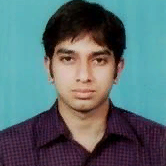
Aritra Bandyopadhyay
Work place: Supreme Knowledge Foundation Group of Institutions, Mankundu, Hooghly, India
E-mail: aritra.d90@gmail.com
Website:
Research Interests: Image Processing, Image Manipulation, Image Compression, Computer systems and computational processes
Biography
Aritra Bandyopadhyay was born in 1988, received his B.Tech (Computer Sc) and M.Tech (Computer Sc) both from West Bengal University of Technology, India in the year of 2010 and 2012 respectively. Presently, he is working as an Assistant Professor in the department of Computer Science and Engineering at Supreme Knowledge Foundation Group of Institutions under West Bengal University Technology, Mankundu, Hooghly, West Bengal, India since 2012. He has 4 publications in International Journals and to his credit. His research interest includes image and signal processing.
Author Articles
A Relook and Renovation over State-of-Art Salt and Pepper Noise Removal Techniques
By Aritra Bandyopadhyay Shubhendu Banerjee Atanu Das Rajib Bag
DOI: https://doi.org/10.5815/ijigsp.2015.09.08, Pub. Date: 8 Aug. 2015
Salt and pepper noise is a type of impulse noise, where certain amount of black and white dots appear in the image. The intensity is accumulated in 8 bit integer, giving 256 possible gray levels in the range (0 – 255).In this range salt and pepper noise takes either minimum or maximum intensity. Positive impulse appears as white (salt) points with intensity '255' and negative impulse appears as black (pepper) points with intensity '0' respectively. Salt and pepper noise removal is not an easy task mostly when noise density in the contaminated image is high and restoration of image quality is essential. Different filters like MF, SMF, AMF, PSMF, DBA, DBUTMF, and MDBUTMF and so on are noticed useful for taking away low, moderate and high density salt and pepper noise. The purpose of this paper is to present these filters first and then revise their art to enhance their performances and usefulness. The comparison shows that some of these filters are very fruitful in some particular noise density levels and hence classified applications on these situations are recommended based on the output of investigations.
[...] Read more.Other Articles
Subscribe to receive issue release notifications and newsletters from MECS Press journals